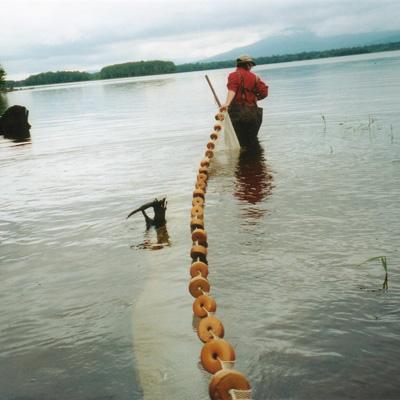Field Verification of Hypothesized Influences of Water-level Manipulation and Bloom Dilution on Hg Bioaccumulation

In a natural process called methylation, mercury in the environment is converted to methylmercury which increases its bioavailability (ability to be taken up by living organisms) and toxicity. Learning more about the environmental factors that influence this process is important to understanding the risk mercury poses to aquatic ecosystems. While work with fishes has indicated that newly created reservoirs often have high mercury levels, it was unclear why. NSRC researchers conducted a study to learn more about how fluctuations in reservoir level, nutrient concentration, plankton (small aquatic organisms) and proximity to wetlands combine to affect mercury levels in living organisms.
To explore the effects of nutrient levels and reservoir level fluctuations on mercury in organisms and water, researchers sampled common loons, fish, zooplankton, and water for total mercury and methylmercury concentrations at 16 reservoirs in Vermont, New Hampshire, and Maine. They also measured total phosphorus levels and collected plankton biomass data at each site and estimated the amount of shoreline and shoreline habitat type using publicly available mapping data and field measurements.
They discovered that oligotrophic lakes (lakes with lower nutrients and plankton biomass) with large fluctuations in water levels and high exposure to wetland shorelines had higher mercury bioavailability in vertebrate and invertebrate organisms. This study helps to understand mercury risk in aquatic ecosystems and provides managers of aquatic systems with tools to reduce mercury contamination in ecosystems by stabilizing reservoir water levels.
